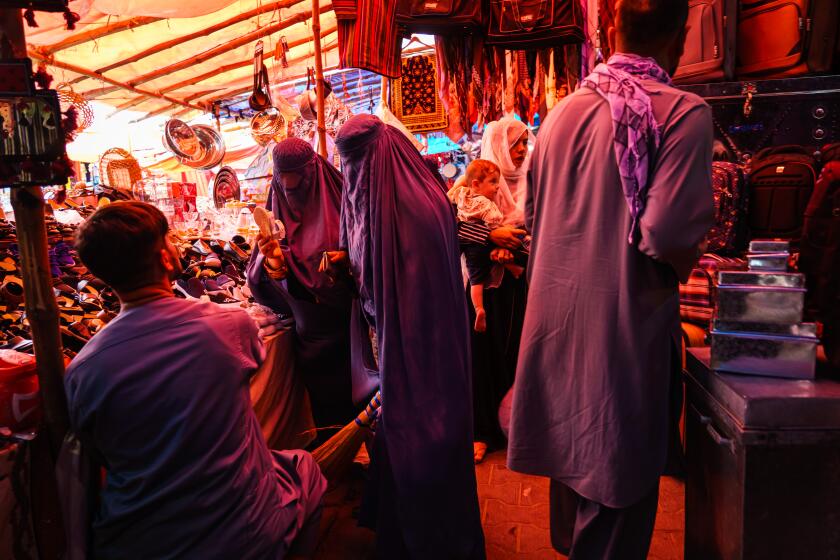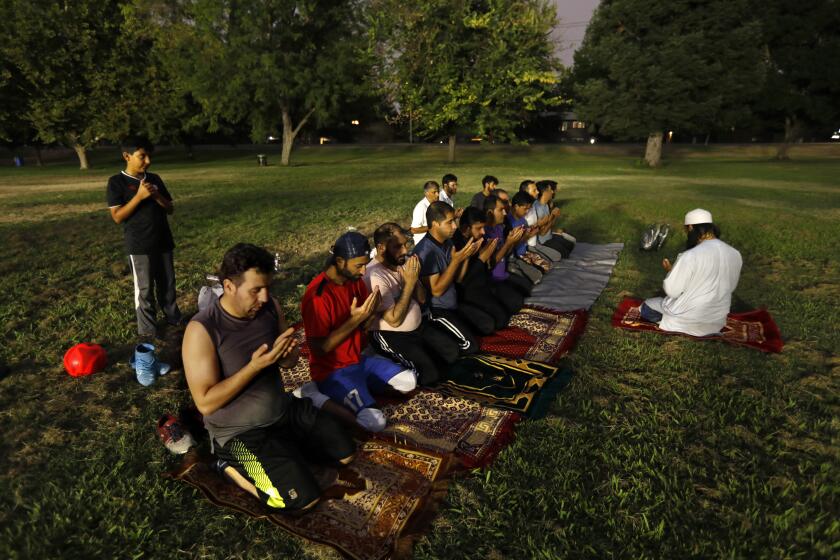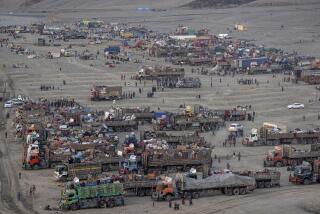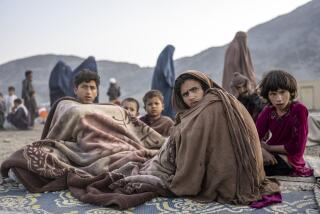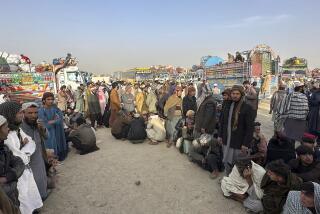Europe fears Afghan refugee crisis after Taliban takeover
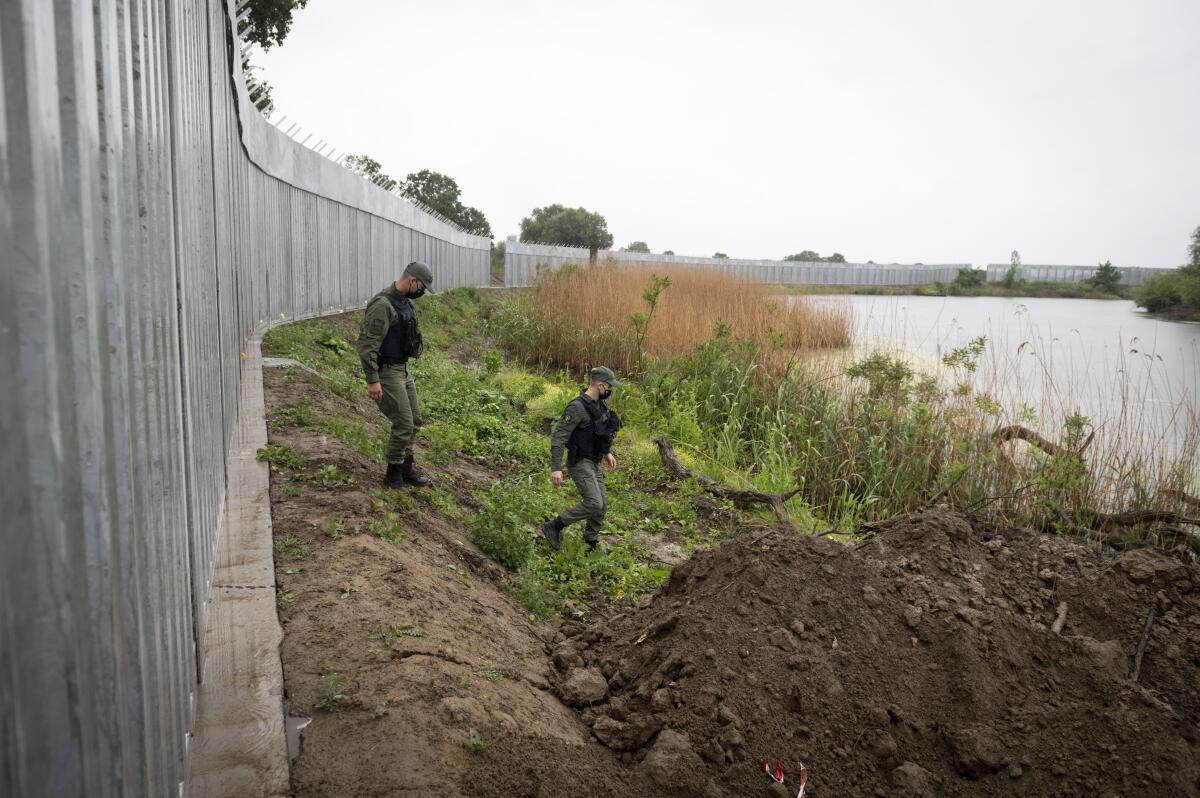
HANGEDIGI, Turkey — From above, the new border wall separating Turkey from Iran looks like a white snake winding through the barren hills. So far it covers only a third of the 335-mile border, leaving plenty of gaps for migrants to slip across in the dead of night.
Traffic on this key migration route from central Asia to Europe has remained relatively stable compared with previous years. But European countries, as well as Turkey, fear the sudden return of Taliban rule in Afghanistan could change that.
Haunted by a 2015 migration crisis fueled by the Syrian war, European leaders desperately want to avoid a large-scale influx of refugees and migrants from Afghanistan. Except for those who helped Western forces in the country’s two-decade war, the message to Afghans considering fleeing to Europe is: If you must leave, go to neighboring countries, but don’t come here.
“It must be our goal to keep the majority of the people in the region,” Austrian Interior Minister Karl Nehammer said this week, echoing many European leaders.
The beach city of Oceanside blossomed over the decades as tens of thousands of Marines trained at Camp Pendleton and veterans returned to live nearby. A somber mood has taken the town as residents watch scenes of chaos in Kabul.
European Union officials told a meeting of interior ministers this week that the most important lesson from 2015 was not to leave Afghans to their own devices, and that without urgent humanitarian help they will start moving, according to a confidential German diplomatic memo obtained by the Associated Press.
Austria, among the EU’s migration hard-liners, suggested setting up “deportation centers” in countries neighboring Afghanistan so that EU countries can deport Afghans who have been denied asylum even if they cannot be sent back to their homeland.
The desperate scenes of people clinging to aircraft taking off from Kabul’s airport have only deepened Europe’s anxiety over a potential refugee crisis. The U.S. and its NATO allies are scrambling to evacuate thousands of Afghans who fear they’ll be punished by the Taliban for having worked with Western forces. But other Afghans are unlikely to get the same welcome.
U.S. and its allies Friday stepped up evacuation efforts from the Afghan capital, Kabul, where thousands of desperate people ringed the airport
Even Germany, which since 2015 has admitted more Syrians than any other Western nation, is sending a different signal today.
Several German politicians, including Armin Laschet, the center-right Union bloc’s candidate to succeed Angela Merkel as chancellor, warned last week that there must be “no repeat” of the migration crisis of 2015.
On Monday, French President Emmanuel Macron stressed that “Europe alone cannot shoulder the consequences” of the situation in Afghanistan and “must anticipate and protect ourselves against significant irregular migratory flows.”
Britain, which left the EU in 2020, said it would welcome 5,000 Afghan refugees this year and resettle a total of 20,000 in coming years.
Besides that, there have been few concrete offers from European countries, which besides evacuating their own citizens and Afghan collaborators say they’re focusing on helping Afghans inside their country and in neighboring countries such as Iran and Pakistan.
Europe “should not wait until people stand at our external border,” EU Home Affairs Commissioner Ylva Johansson said.
Greece, whose scenic islands facing the Turkish coast were the European point of entry for hundreds of thousands of Syrians, Iraqis, Afghans and others six years ago, has made clear it doesn’t want to relive that crisis.
As the Taliban solidifies control of Afghanistan, Californians with friends and family in the country are scrambling to help.
Migration Minister Notis Mitarachi said Wednesday that Greece won’t accept being the “gateway for irregular flows into the EU” and that it considers Turkey to be a safe place for Afghans.
Such talk makes Turkish President Recep Tayyip Erdogan see red. His country already hosts 3.6 million Syrians and hundreds of thousands of Afghans, and he has used the threat of sending them to Europe for political leverage.
“Turkey has no duty, responsibility or obligation to be Europe’s refugee warehouse,” Erdogan warned in a speech Thursday.
The Turkish president talked about migration from Afghanistan in a rare phone call with Greek Prime Minister Kyriakos Mitsotakis on Friday, and also is discussing the issue with Iran, a statement from Erdogan’s office said.
Attitudes toward migrants have hardened in Europe following the 2015 crisis, fueling the rise of far-right parties like the Alternative for Germany, the biggest opposition party in Parliament ahead of the federal election next month.
Even in Turkey, migrants from Syria and Afghanistan, once treated like Muslim brethren, are increasingly viewed with suspicion as the country grapples with economic problems including rising inflation and unemployment.
Acknowledging the public’s “unease” about migration, Erdogan noted how his government has reinforced the eastern border with Iran with military, gendarmerie, police and the new wall, which has been under construction since 2017.
AP journalists near the Turkish border with Iran encountered dozens of Afghans this week, mostly young men, but also some women and children. Smuggled across the border at night in small groups, they said they left their country to escape the Taliban, violence and poverty.
“The situation in Afghanistan was intense,” said one young man, Hassan Khan. “The Taliban captured the whole of Afghanistan. But there is no work in Afghanistan; we were compelled to come here.”
Observers say there are no indications yet of any mass movement across the border. Turkish authorities say they have intercepted 35,000 Afghans entering the country illegally so far this year, compared with more than 50,000 in all of 2020 and more than 200,000 in 2019.
Metin Corabatir, head of the Ankara-based Research Center on Asylum and Migration, said there has been a small increase in arrivals across the border from Iran recently, “but there is no mass migration.”
Farha Bhoyroo, who works for the United Nations refugee agency in Iran, gave a similar assessment of the Afghan-Iranian border.
“So far numbers are quite stable,” she said. “We have seen a slight increase in Afghan refugees coming to Iran, but we don’t qualify it as an influx.”
The office of the U.N. High Commissioner for Refugees estimates that 90% of the 2.6 million Afghan refugees outside the country live in neighboring Iran and Pakistan. Both countries also host large numbers of Afghans who left in search of better economic opportunities.
By comparison, about 630,000 Afghans have applied for asylum in EU countries in the last 10 years, with the highest numbers in Germany, Hungary, Greece and Sweden, according to the EU statistics agency. Last year, 44,000 Afghans applied for asylum in the 27-country bloc.
Jan Egeland, secretary-general of the Norwegian Refugee Council, said it’s not a foregone conclusion that the Taliban takeover will result in a new refugee crisis.
“I would warn against a self-fulfilling prophecy,” he told the AP. Afghans are “scared, bewildered but also hopeful that a long, long war will be over and maybe now they can avoid the crossfire.”
He said much depends on the Taliban allowing development and humanitarian work in the country and on donor nations continuing to fund those efforts.
“If you would have a collapse of public services and if there would be a major food crisis, there will be for sure a mass movement of people,” Egeland said.
More to Read
Sign up for Essential California
The most important California stories and recommendations in your inbox every morning.
You may occasionally receive promotional content from the Los Angeles Times.

